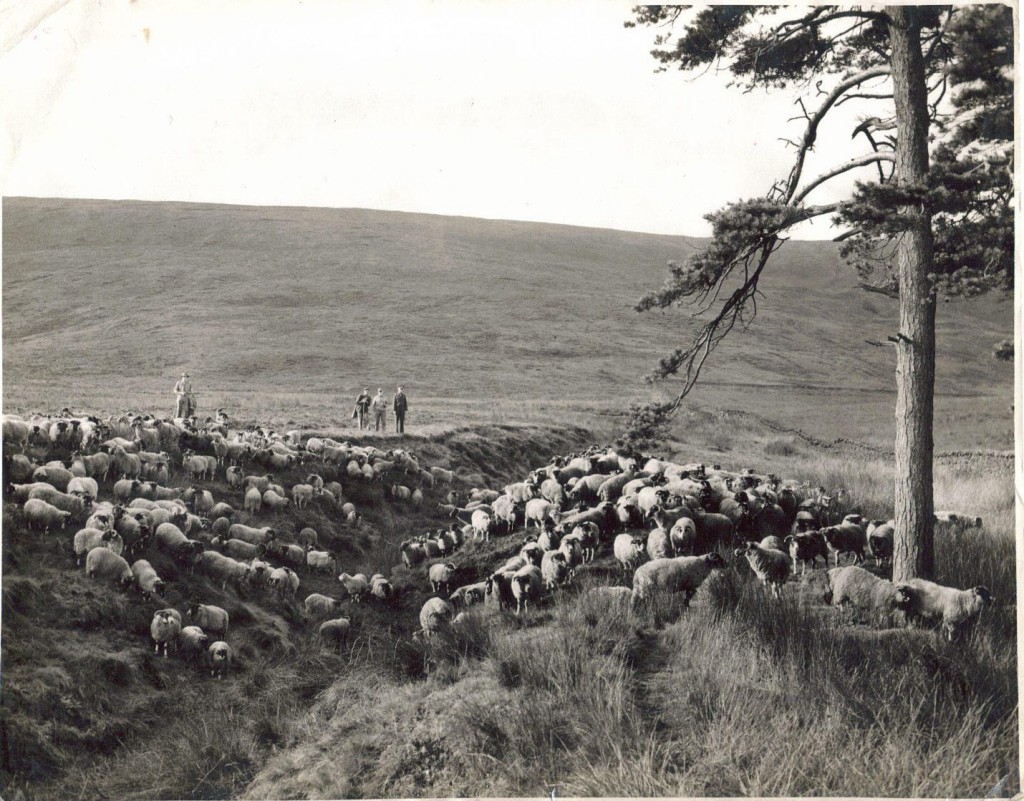Ewes & Tups
When the lambs had grown a little, the young tups, males, were separated out and castrated to get them to put on weight so they could be sold for slaughter and meat, whilst the young ewes were sold to other farmers to produce more lambs so the cycle could continue. We retained the breeding ewes for their wool, and the ability to birth more lambs.
Sheep Care
Next in May-June and on warm days, one job I did was to check the sheep for maggots in any cuts or wounds and under their tails. If found, the area had to be scraped out and covered with Stockholm Tar. If left untreated, the maggots could eventually kill the animal, and when this did occur and I found a dead sheep I had to remove the fleece to bring it back with me, and bury the remains.

Gathering a few of the Marshaw sheep. 1943.
The figures are from left are Tom (Tucker) Atkinson, Tommy Leedham, Mr. John Drinkall and John Atkinson.
Clipping Time
In the early summer came “clipping time”, which we did in the wool barn with farmers and their men coming from neighboring farms to help. Prior to this the sheep to be shorn had been gathered from all over and brought down from the fells to be penned. This was no small task for with such a large farm and the wild terrain and so many ewes with each having at least one lamb the sheep were difficult to locate, round up and pen. Once the clipping began, and it was all done by hand, I initially had the job of catching the sheep and bringing them to the clipping bench, a low bench and with an open top. The clipper sat back to a wall with legs astride it. The sheep was then lifted on the bench and laid on its back with its head toward the clipper. Using small shears, the clipper started at that end. An expert clipper could get the whole fleece off in a matter of minutes. Once the sheep was shorn they jumped about in the pleasure of having rid themselves of such warm apparel.
I am David Drinkall, born and raised at Marshaw and would love to hear more stories about Marshaw.